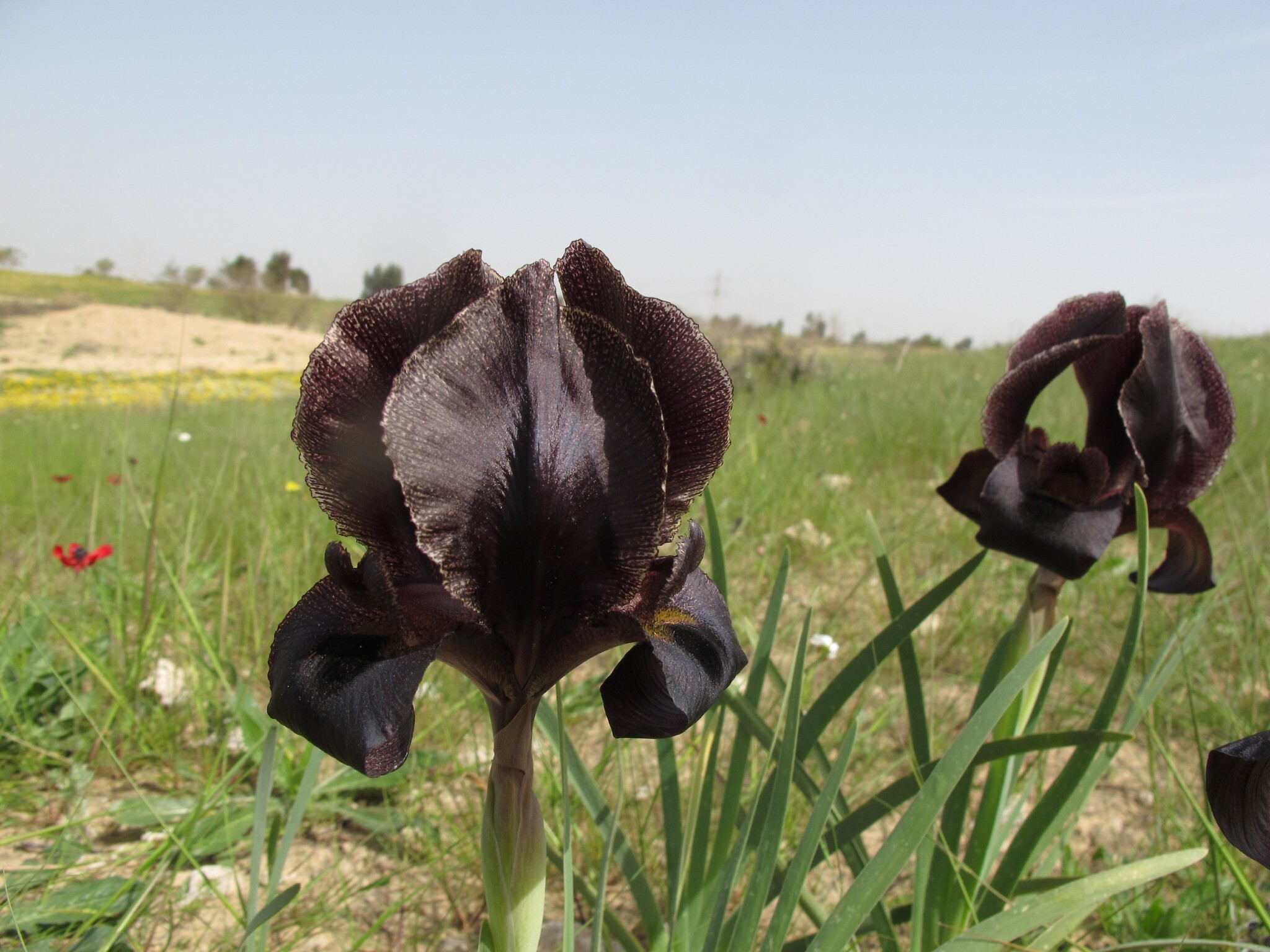There are irises and then there are royal irises, majestically capacious flowers dramatically blooming now from the north to the south of Israel, putting on one of the biggest and most dramatic shows of wild horticulture in the entire Eastern Mediterranean.
The iris, which blooms in many colors, and sometimes carries several colors on the same flower, is thought to have taken its name from the Greek goddess of the rainbow.
In Israel there are thought to be 18 species of Iris, all but one of them protected. About 10 of the species (botanists have yet to agree on the exact number) are royal irises.
The first royal iris to flower in Israel is the deep maroon Coastal Iris (Iris atropurpurea), though its season has already mostly ended. However, many other species are blooming now during the cooler spring months, until the summer heat begins to set in. They can be found from the Golan Heights in the far north to the Negev desert in the south, each species having evolved to survive in a particular habitat.

Judean iris, or Iris atrofusca. (Yuval Sapir)
Earlier this month, this reporter joined hundreds of other pilgrims seeking the exquisite Nazareth iris (Iris bismarckiana) on northern Israel’s Mount Moreh. The southeast slope of the large hill, where the flower hunters gathered, overlooks the fertile Jezreel Valley, traditionally the breadbasket of Israel. The city of Nazareth can be seen from the mountain’s other side.
Some quizzed each other for intel on whether they’d seen the iris yet, and took pictures on their phones. Others just sat on the ground, mesmerized by the large flower heads illuminated by the golden rays of the afternoon sun.
The Nazareth iris’s range stretches from Mount Moreh up to Metulla on the Lebanese border and to Mount Hermon on the Golan Heights. The plant is endemic (meaning found nowhere else) to northeastern Israel and southern Lebanon.
It bears one flower per stem and appears either singly or in small groups. Its flowers can be as big as a human hand, with erect, upper petals showing a delicate bridal white, while lower ones sport maroon veins and a dark spot.

A Nazareth iris bloooming on Mount Moreh in northern Israel, March 6, 2021. (Alan Freeman)
Botanically, royal irises are known as members of the Oncocylus section of irises. Onco means mass, or bulk in Greek, and cyclus means circle. The name refers to the ball-like shape of the flower.
In Hebrew, the group is known by the lyrical name heichal, meaning a palace, temple, hall or inner sanctum. Indeed, the upper petals fold over one another to form a kind of chamber.
This year there are fewer flowers than normal because last fall, when the flowers started to develop, was extremely dry, botanist Yuval Sapir of Tel Aviv University, who runs the university botanic garden and is an expert in Oncocyclus irises, told The Times of Israel.
More than 15 years ago, Sapir, along with botanists Avi Shmida and Gidi Ne’eman, set out to establish why night-time solitary bees visited Oncocyclus irises at dusk and spent the night inside them, even though these irises do not offer any nectar as an enticement.
Their initial conclusion was that the dark spots on the flowers of these irises absorb heat during the day and release warmth the following morning, allowing bees spending the night in them to warm up as well and to get a head start on competitor bees that sleep on the ground. It’s a win win, as the bee gets covered in pollen during the night, which it takes to the next iris it visits, helping with fertilization. (Sapir is doing further research on the theory at present.)

Sand Iris, or Petra Iris – Iris petrana. (Yuval Sapir)
In total, there are some 50 known Oncocyclus species, all of which grow in a relatively small area stretching from the Caucasus to Turkey, to Israel’s southern Negev desert. It remains a mystery why they don’t grow elsewhere.
Thanks to its location between Africa, Asia and Europe and its wide range of habitats, from desert to mountain and everything in between, Israel is home to around 2,800 species of plants, which include many bulbs such as the iris.
Bulbs, known scientifically as geophytes, have underground storage organs that are particularly well suited to hot climates, because they can send up flowers in spring and then disappear into the cool underground until the fall.
We eventually found the Nazareth irises, discovering that you need to park at the top of the hill next to a group of tall antennae and follow a small footpath down toward the southeast, facing Mount Gilboa.
We got to the spot thanks to a tip from two “pilgrims” returning to their car just as we were parking ours. We also got help from a lovely local Arab man, who gave us thick, black coffee from his thermos and pointed us in the right direction, expressing amazement that we had come all this way to see flowers.
 RSS Feed
RSS Feed















 March 13th, 2021
March 13th, 2021  Awake Goy
Awake Goy  Posted in
Posted in  Tags:
Tags: 













